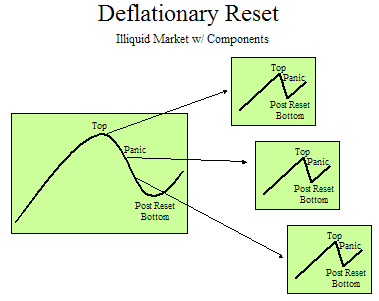We’ve been discussing how the Great Recession started out as a massive credit collapse, resulting in a deflationary cascade. With declining wealth, incomes and revenues, people and corporations have had to embrace some extreme cost-cutting measures. As a result, the significant advances in technology over the last couple of decades are now being deployed in ways that are drastically changing the employment landscape.
Employment is not the only aspect of our economy that is being affected. The very nature of markets, and marketing, have changed as well. This can be seen in the decline of newspapers across the country. As a business broker, I used to advertise in the local paper. About 5 years ago, the response to my print ads fell off a cliff, while the response to my online advertising started to take off. I believe this is a direct result of the rise of the micro-niche.
Going back several decades or so, virtually all marketing was mass marketing. You advertised on TV, radio, or print, to a very large audience. This made sense if you were selling a mass-consumer item, but it also made it difficult to market niche products or services.
Then, technology started to allow a more focused type of marketing. Direct mail and telemarketing, while costly, allowed targeted messages to a targeted audience. New cable channels and magazines segmented viewers into smaller, and more consistent audiences.
Today, the Internet and other technologies allow us to advertise to very small, targeted markets, for very little money. For example, using a “pay-per-click” (PPC) campaign, I can specifically target people who want to buy small businesses in Atlanta for pennies per site visitor. I can buy a TV ad that is only shown to one little neighborhood on a local cable system, for a fraction of the cost for the same TV ad that goes out to everyone watching that channel.
The result is counter-intuitive. It is actually easier and more effective to market unique product and services, than it is to go after any mass-consumer markets. When combined with the other changes summarized in my last post, we now have a world where small companies and individuals can successfully compete with the big boys with unique products and services.
How big a market do you need? It depends on what you’re selling, and your profit margin. Let’s say that you desire an income of $100,000 per year. You can achieve this milestone various ways, as outlined below:
| Gross Income | Net Profit | Transactions per Year |
Example |
| $120,000 | $100,000 | 1 | Commercial Real Estate Agent |
| $10,000 | $8,000 | 13 | Marketing Consultant |
| $1,000 | $800 | 125 | Personal Coach |
| $300 | $250 | 400 | eCourse |
| $25 | $20 | 5000 | eBook |
Bottom line, technology has made it cost effective to market to very small niches, and to customize products and services for these very small niches. Next time, we’ll continue our discussion by exploring the customization of products for micro-niches. As always, comments welcome.
Tranzitioning.com is a blog by Jay Fenello, principal and founder of TranzServices.com,
an Atlanta-based firm that helps people tranzition to the new economy.



